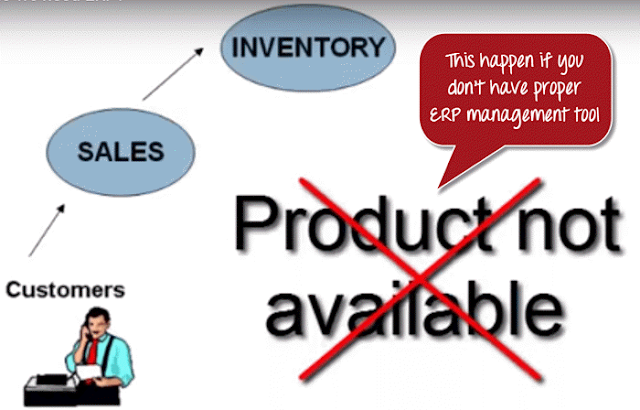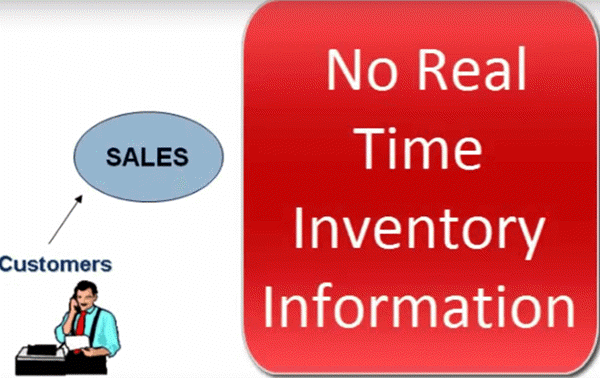Full Form Of SAP - What is SAP? Definition of SAP ERP Software
What is Full Form Of SAP?
SAP stands for Systems Applications and Products in Data Processing.SAP, by definition, is also name of the ERP (Enterprise Resource Planning) software as well the name of the company.
SAP Software was Founded in 1972 by Wellenreuther, Hopp, Hector, Plattner, and Tschira.
SAP system consists of a number of fully integrated modules, which covers virtually every aspect of business management.
SAP is #1 in the ERP market. As of 2010, SAP has more than 140,000 installations worldwide, over 25 industry-specific business solutions and more than 75,000 customers in 120 countries
Other Competitive products of SAP Software in the market are Oracle, Microsoft Dynamics, etc.
SAP stands for Systems, Applications, Products in data processing. According to German language SAP stands for Systeme, Anwendungen und Produkte in Der Datenverarbeitung. –> SAP is the fourth largest enterprise software company in the world.
What is SAP ERP? For what reason is it Required?
What is SAP ERP? Why is it Require?
The accompanying video will clarify the requirement for an ERP programming like SAP in an undertaking
Snap here if the video isn't open
The basic inquiry for any tenderfoots is the reason Enterprise Resource Planning additionally called ERP, is required? To answer this current, we should look at this run of the mill business situation.
Assume a customer moves toward a sales team requesting a specific product. The sales team contacts the stock department to check the accessibility of the product. Shockingly, the sales team discovered that the product is out of stock. So next time this doesn't occur, they need to present a SAP ERP instrument.
Before we really find in detail, what ERP is and how ERP can help in your business procedure, we will see how various departments are engaged with the entire business process, directly from the requesting of the raw material – to assembling merchandise – to conveying last products to the client.
Here is the whole process that is followed by any business unit.
Customer contacts the sales team to check the accessibility of the product
Sales team moves toward the Inventory department to check for the accessibility of the product
On the off chance that the product is out of stock, the sales team moves toward the Production Planning Department to make the product
The production planning team checks with stock department for accessibility of raw material
On the off chance that the raw material isn't accessible with stock, the Production Planning team purchases the raw material from the Vendors
At that point Production Planning advances the raw materials to the Shop Floor Execution for genuine production
When prepared, the Shop Floor Team sends the products to the Sales Team
Sales Team who thusly convey it to the customer
The sales team refreshes the fund with income created by the clearance of the product. Production planning team update the money with installments to be made to various sellers for raw materials.
All departments approach the HR for any Human Resource related issue.
That is a run of the mill business process for any assembling organization. Some key deductions one could get from the situation would be.
It has numerous departments or specialty units
These departments or specialty units constantly impart and trade data with one another
The accomplishment of any association lies in powerful correspondence, and data trade, inside these departments, just as related outsider, for example, merchants, outsourcers, and clients.
In view of the way in which correspondence and data traded is overseen. Venture systems can be extensively named
1) Decentralized System
2) Centralized System which is likewise called as ERP.
Decentralized System
How about we take a gander at Decentralized system first, in an organization with Decentralized System of Data Management. There are two significant issues –- Data is maintained locally at the individual departments
- Departments do not have access to information or data from other departments
To distinguish issues emerging because of decentralized Enterprise the board system lets take a gander at a similar business process once more. The client moves toward the sales team for a product, however this time around, he needs the product, on a dire premise.
Since it is a decentralized procedure, the Sales Team don't have any constant data access to the productavailability. So they approach the Inventory department to check the accessibility of the product. This procedure requires some investment, and the client picks another seller prompting loss of income and client disappointment.
Presently, assume the product is out of stock, and the Sales Team moves toward the Production Planning team to fabricate the product for sometime later. Production Planning Team checks the accessibility of the raw materials required.
In a decentralized system, raw material data is put away independently by Production Planning just as the Inventory Department. Along these lines, data support cost (for this situation, Raw Material) goes up.
The raw material data is accessible in two distinct departments Inventory just as Production Planning. At the point when sales team check a specific raw material required to make the product, it shows the raw material is accessible according to the stock, however according to the database of the production planning team, the raw material is out of stock.
Along these lines, they feel free to purchase the raw material. Therefore, material, just as stock expense, goes up.
When the raw material is accessible, the shop floor department all of a sudden acknowledges they are shy of laborers. They approach the HR, who thusly contract transitory representatives at higher than advertise rates. Along these lines LABOR Cost Increases.
The production planning department neglects to refresh the account department on the materials they have acquired. The money department defaults the installment cutoff time set by the merchant causing the organization loss of its notoriety and in any event, welcoming a potential lawful activity.
These are only a couple of numerous issues with decentralized systems.
Some Major issues with the decentralized system are –
Various divergent data systems made exclusively after some time which are hard to keep up
Coordinating the data is time and cash expending
Irregularities and duplication of data
Absence of auspicious data prompts client disappointment, loss of income and notoriety
High Inventory, material, and human asset cost.
These are some significant drawbacks for which we need an answer. All things considered, the Solution lies in Centralized Systems i.e., ERP.
Brought together System
In an organization, with a Centralized System of Information and Data Management.
1) Data is kept up at a focal area and is imparted to different Departments
2) Departments approach data or data from different Departments
How about we take a gander at a similar business process again to see how a Centralized Enterprise System defeats issues presented by a Decentralized Enterprise System.
For this situation, all departments update a Central Information System.
At the point when Customer moves toward the sales team to purchase a product on an earnest premise. The Sales Team has constant data access to the products in stock which is refreshed by the Inventory Department in the Centralized System
Sales Team react to client demand on schedule, prompting Increased Revenue and Customer Delight.
On the off chance that, fabricating is required the Sales Team update the Centralized Database, with the goal that all the department stay educated about the product status.
Production Planning Department is auto refreshed by the Centralized Database for necessities. Production Planning Team checks the accessibility of the raw materials required by means of the Central Database, which is refreshed by the Inventory Department.
Subsequently, Data Duplication is evaded, and precise data is made accessible. The Shop Floor Team update their Man Power Status consistently in the Central Database, which can be gotten to by the HR department.
If there should arise an occurrence of deficiency of workforce, HR team begins the enrollment procedure with significant lead time to procure a reasonable up-and-comer at advertise cost. Along these lines work cost goes down.
While merchants can legitimately present their solicitations to the Central Enterprise System, which can be gotten to by the account department. In this manner, installments are made on schedule, and conceivable lawful activities are dodged
SAP programming is a kind of Centralized System. SAP Systems are the most prominently utilized in ERP programming.
Key advantages of the incorporated system are:
It dispenses with the duplication, intermittence, and excess in data
Gives data crosswise over departments progressively.
SAP System gives power over different business forms
Expands productivity, better stock administration, advances quality, decreased material cost, viable HR the board, diminished overheads helps benefits
Better client association and expanded throughput. It additionally improves client assistance
Subsequently, a unified endeavor the board system is required.
SAP Software is a brought together endeavor the executives system, otherwise called Enterprise Resource Planning.
The importance of the abbreviation SAP is Systems Applications and Products in Data Processing







